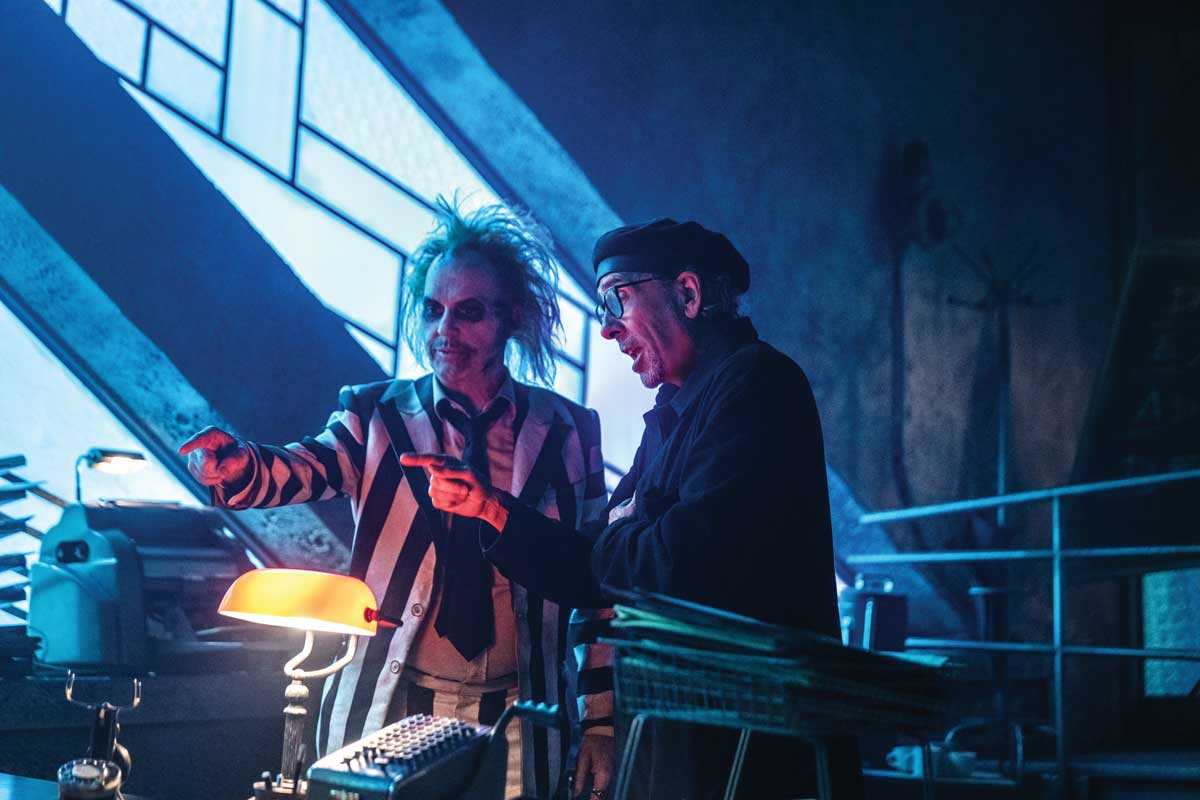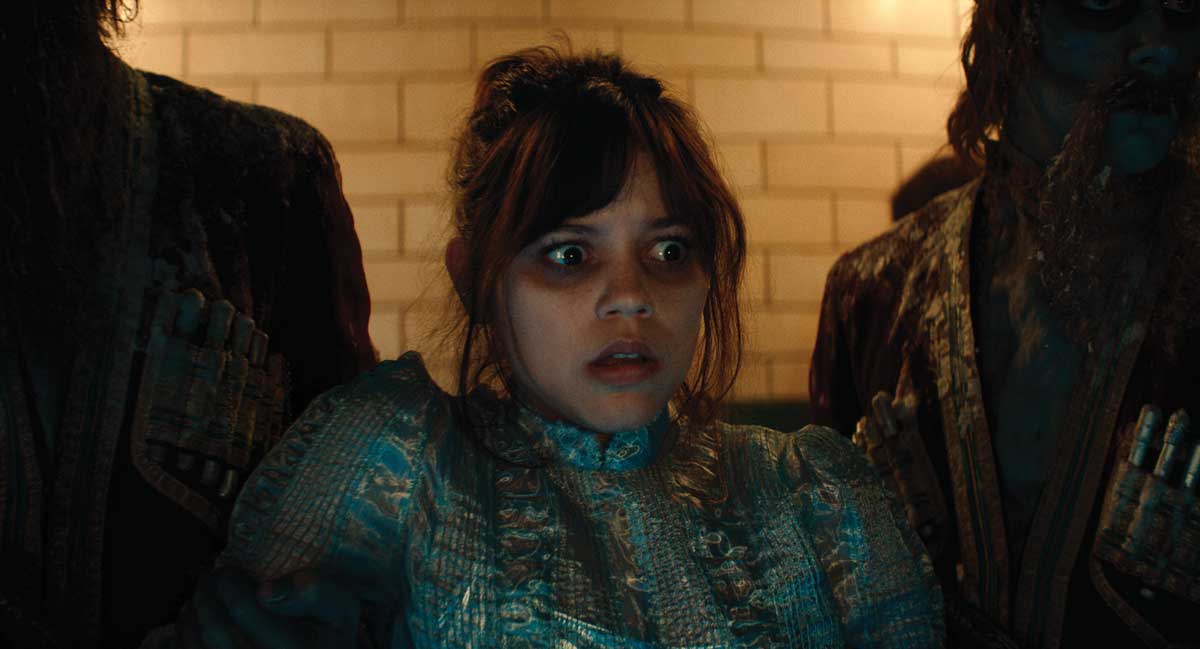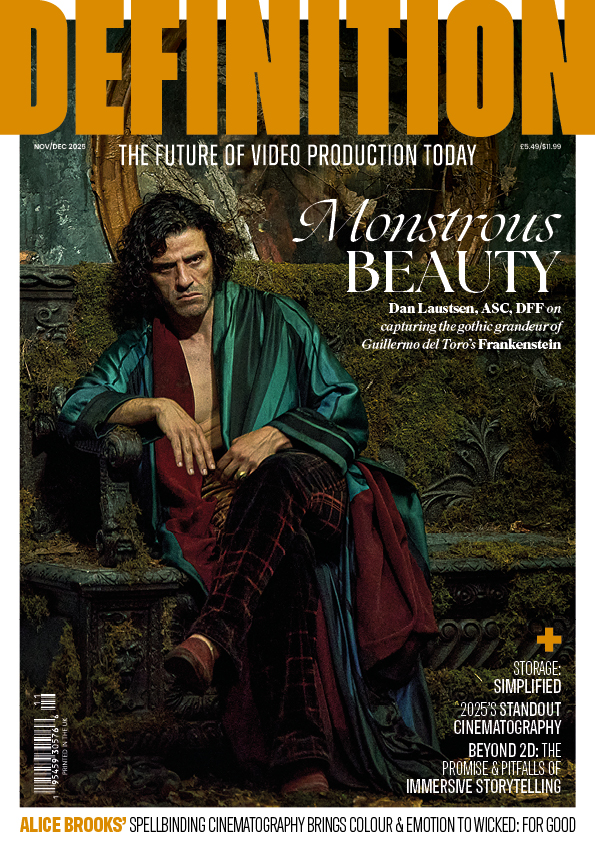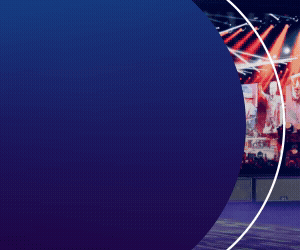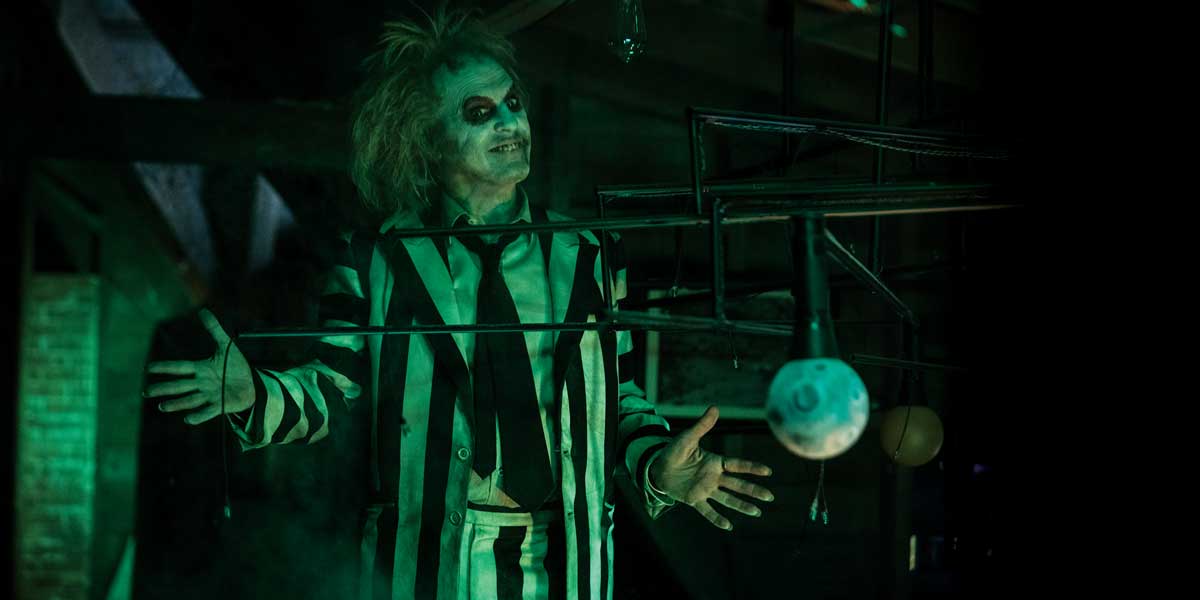
Beetlejuice Beetlejuice
Posted on Sep 19, 2024 by Samara Husbands
DOP Haris Zambarloukos, BSC on bringing a cinematic icon back to life in Beetlejuice Beetlejuice
Tim Burton’s Beetlejuice Beetlejuice takes place 36 years after the events of the first film, as three generations of the Deetz family return to Winter River when family tragedy strikes. After Lydia’s teenage daughter Astrid accidentally opens a portal to the afterlife, Lydia is once again haunted by Beetlejuice.
Michael Keaton, Winona Ryder and Catherine O’Hara reprise their iconic roles, with Jenna Ortega, Justin Theroux, Monica Bellucci and Willem Dafoe joining the cast – stunningly captured in autumnal hues by DOP Haris Zambarloukos, BSC. Beetlejuice Beetlejuice, appropriately, opens in cinemas 6 September.
Having previously collaborated with producer Tommy Harper on Jack Ryan: Shadow Recruit (2014), Zambarloukos was approached again by Harper about shooting Beetlejuice Beetlejuice. “He needed to know if I’d be available,” recalls Zambarloukos. “I told him I was – and even if I wasn’t, I’d make myself available. After that, we had a brief chat with Tim and I started straight away. This is one of the most unusual beginnings and preps I’ve ever been involved with since it’s so in Tim’s head.”
When it came to initial conversations about the look of the film, Burton made everyone feel at ease about recreating the look of the original Beetlejuice. “It’s Tim’s film 36 years later, following the same family,” continues Zambarloukos. “He is a man of very few words and prefers drawing to talking, so there were lots of illustrations and work by the art department that he guided. I also felt I needed to spent time quietly with Tim and just listen, without asking too many questions. It would naturally happen in a conversation, location scout or a walk over a set, in the way that we looked at certain images. Then, I gradually made some suggestions about certain things and we took it from there. We thought about what these characters would be like now and how you would see that human condition progress; that informed all my decisions.”
Burton was adamant about the film being as much in camera as possible, relying heavily upon his animatronic, puppeteering and on-set special effects team – with all departments working in unison. Zambarloukos also looked at the films of Mario Bava as reference. “Bava’s films are Tim’s favourite,” he admits. “I’d obviously seen his films, but hadn’t really understood them in that way. I went back to my own early filmmaking education, studying what’s handmade and what’s in camera. I took reference from what I loved early on, such as FW Murnau films. Faust, Nosferatu and The Last Laugh are all very profound films; the humanity is deep despite being expressionist.
Zambarloukos captured Beetlejuice Beetlejuice with a Sony VENICE 2 and Ultra Panatar lenses, which he had previously used on A Haunting in Venice (2023). “It’s an incredible camera – especially in low light – so I was certainly going to use it again,” enthuses Zambarloukos. “Tim always likes to work in 1.85:1, which I have been using more and more as an aspect ratio. I looked at how I could use the Sony VENICE 2 to get the maximum definition and fidelity with the most native 1.85:1 aspect ratio. We used Ultra Panatars and the newly released Ultra Panatar II lenses by Panavision.”
The film was shot over a period of nearly nine weeks. Capturing in-camera effects proved fairly complex, with the dream sequence in the final church scene being a notable example. The sequence involved wire work, puppeteering and a demonised musical lip sync, as well as rain and thunder effects.
“The whole point of it being a challenge was that it looks effortless and real for the audience,” explains Zambarloukos. “Even what looks like a simple shot of a shrinker in a chair is an actor with an animatronic face on. That’s one actor performing and then two or three animatronic puppeteers working the eyes and nose, mouth and head movement to make it realistic. Most people would think that’s a visual effects shot, but it’s made completely in camera. Combine that with the various lighting cues and every shot is a challenge. This is also the first film I have ever worked on where there is almost not a single deleted scene; we used almost every shot we ever made.”
Lighting for the film was split into two categories: the afterlife and the real life. Zambarloukos wanted to take it a step further with the afterlife colour, ensuring it always pulsed. “To do that well and with cohesion took a lot of programming, work and experimentation, then showing Tim the results,” he describes. “Every light was an LED and numbered to a channel. We wanted to have something organic as well so we used plenty of real firelight. SFX would bring what we called witches’ fingers, which was five copper tubes connected to a gas canister. They give off a flame, but you can control it. With copper wires, you can twist and bend them to angle it a certain way. There wasn’t that much firelight in camera, but there was the effect of it. The idea was to have something that pulsed – that was organic and very different from all the electronic and digital technology we were using.”
Zambarloukos and his team used as much natural light as possible for the ‘normal’ real-life locations. “We were set in autumn around Halloween,” he adds. “Autumnal light has this quality where the highlights are warm, but the shadows are cool. Because of the strike, we ended up shooting a small part of the film in real autumn in Boston; the tree, leaf and light colours were all absolutely perfect. We did Vermont in the summer and some work in West Wycombe in the UK that was meant to be New York and Vermont. Although I have a concept for what autumnal light is, having a good chunk of sequences – such as the treehouse and the bike sequence – in real autumn meant that it was easy to manipulate in the DI slightly, where our shadows and highlights went to match the curve we were getting from real autumn.”
When it comes to lighting eyes, Zambarloukos has a whole bunch of tricks up his sleeve to get the eye light correct. “For this one scene, we were shooting Catherine O’Hara. She was speaking and doing this motion with her face, keeping her eyes closed, and I couldn’t see her eyes much,” details Zambarloukos. “Tim is so gracious and kind. When we finished the scene, he said: ‘I had a specific task for Catherine. My mother used to speak to me very animatedly, but with her eyes closed, and it had a psychological effect on the person listening. I would like that effect to happen on the audience, so that’s why I didn’t ask you to change it.’ Everything Tim does has a personal nature. He’s thought about it and put it into action. It shows how gracious, polite and generous he is with his collaborators. What wouldn’t you do for a director like that?
“That exemplifies how I felt throughout the shoot. I have never had so much fun on a film, nor have I ever had so many challenges. But I was surrounded by people who were incredibly talented and enthusiastic, always giving 100%,” he concludes. That makes this production one for the books.
This feature was first published in the October 2024 issue of Definition.



